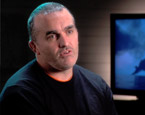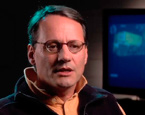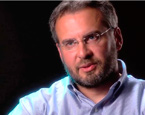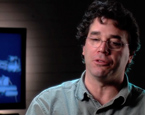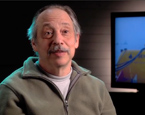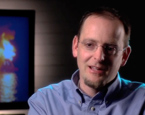3. Sampling the Source
After measuring the flow rate of the fluid spewing out of the broken wellhead, the next step for WHOI scientists was to get a pure, representative sample of the material. That was the only way the team would be able to figure out two critical pieces of information: the amount of oil in the mixture, and the chemical “fingerprint” of that oil.
In addition to oil, the billowy mixture gushing from the wellhead contained mud, seawater, and large amounts of natural gases such as methane. Gases were likely to rise to the surface and escape into the atmosphere, form crystalline hydrates at the seafloor, or be biodegraded by microbes. Oil, on the other hand, would have different fates. Knowing the amount of oil entering the Gulf was essential for estimating its potential for harm. It was also necessary for the scientists to convert their flow rate measurement into an estimate of barrels of oil spilled per day.
Knowing the chemical composition of the oil would be essential to determining, in the months and years to come, whether oil found on a beach, in a marsh, in the water, or in seafloor sediments came from the Deepwater Horizon spill.
WHOI chemist Jeff Seewald had the perfect tool for the job, although he didn’t invent it for collecting deep-sea oil. About 10 years ago, Seewald and several WHOI engineers developed the Isobaric Gas-Tight sampler (IGT) to collect boiling-hot fluids and gases from another high-pressure, deep-sea environment: hydrothermal vents.
The IGT sampler draws material in slowly through its narrow snorkel, ensuring a representative sample of the mixture. If it filled immediately, it might collect mostly gas or mostly oil, depending on where in the gushing jet the snorkel was positioned. The device then keeps the sample at the high pressure at which it was collected—in this case, about 2,200 pounds per square inch—and prevents gases from being lost as the sample is brought back to lower pressures at the surface.
Having proven its worth many times over in some of the most challenging natural environments on Earth, Seewald’s device was now called upon to bring back the single most important sample of the crisis.
WHOI personnel in this video (in order of appearance):
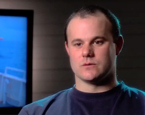
Sean Sylva
Marine geochemist
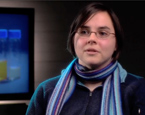
Karin Lemkau
Graduate student
